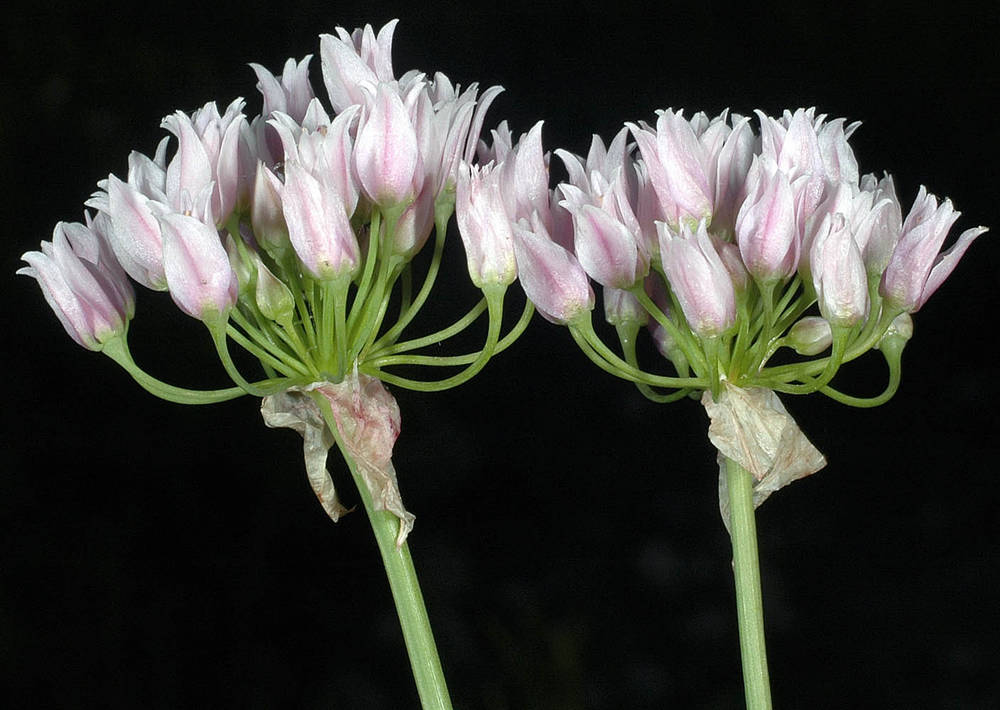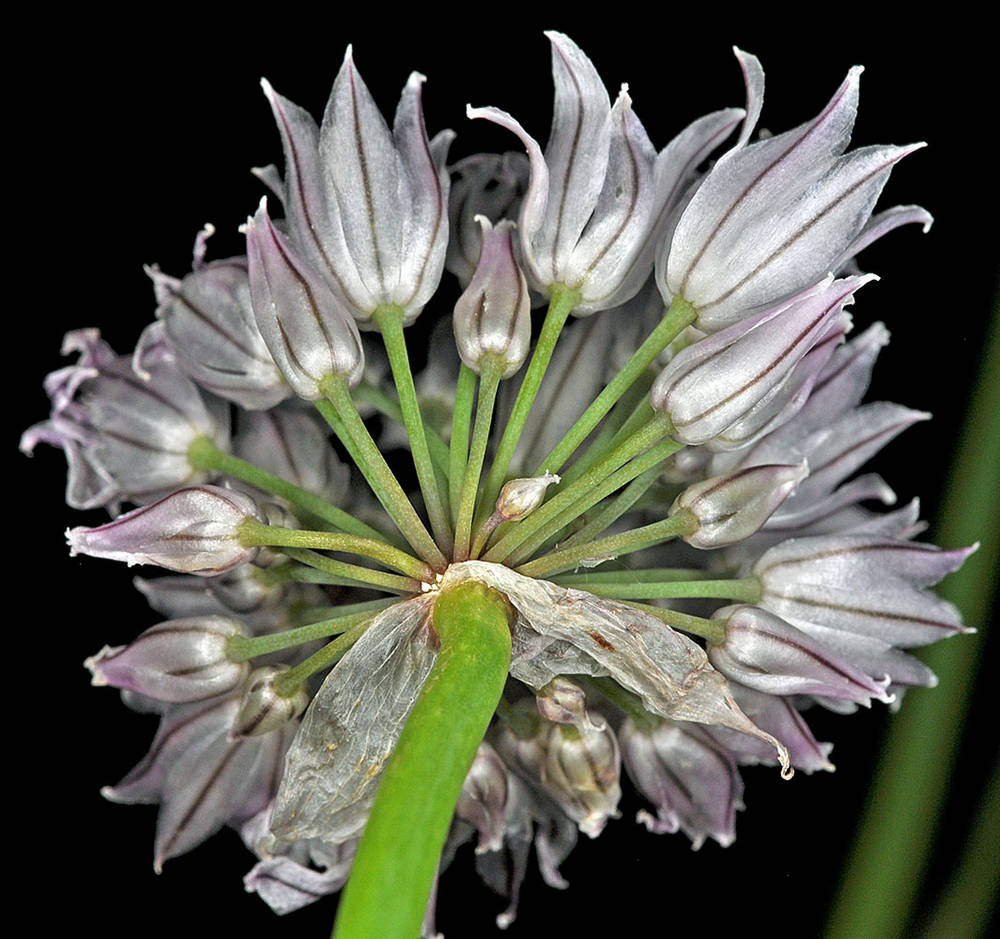Allium geyeri
Allium schoenoprasum
Geyer's onion
chives
2–10+; ovoid or slightly elongate;
outer coats enclosing 1 or more bulbs, reticulate;
cells rather coarse-meshed; open, fibrous.
1 or more, clustered; short-rhizomatous at base, cylindric, elongate;
outer coats enclosing bulbs, persisting as fibrous reticulum but often appearing membranous because outer coats are often not collected;
cells minutely striate.
persistent, usually green at anthesis, usually 3–5;
blades solid; more or less straight; flat, channeled; (6)12– 30 cm × 1–3(5) mm.
persistent, green at anthesis, usually 2;
blades hollow; terete, 20–60 cm × 2–7 mm.
persistent; solitary; erect; terete or somewhat 2-angled, 10–50 cm × 1–3 mm.
persistent, 2–12+, clustered; erect; terete; hollow, 20–50 cm × 3–5 mm.
persistent; erect; compact, 10–25-flowered, hemispheric to globose, not producing bulbils, or 0–5-flowered, largely replaced by ovoid, acuminate bulbils;
pedicels becoming rigid and stiffly spreading in fruit, 8–13 mm;
spathe bracts 2–3.
persistent; erect; compact, 30–50-flowered; more or less subglobose;
pedicels 2–6 mm;
spathe bracts 2.
(4)6–8(10) mm;
tepals erect or spreading; ovate to lanceolate; more or less equal, pink to white;
margins often obscurely toothed;
apex obtuse to acuminate;
stamens included;
ovary when present, inconspicuously crested with 3–6 low processes;
stigma unlobed or obscurely lobed.
8–12 mm;
tepals erect, elliptic to lanceolate; more or less equal, pale purple to deep lilac, drying pink, or white, permanently enclosing capsule;
margins entire;
apex acute to acuminate;
tips more or less recurved; midribs not thickened;
stamens included;
ovary crestless;
stigma unlobed or obscurely lobed.
=16.
Allium geyeri
Allium schoenoprasum
2 varieties.
Wet meadows, rocky or gravelly stream banks and lake shores. Flowering May–Aug. 50–200 m. Col, WV. WA; circumboreal. Exotic?
Allium schoenoprasum is native to parts of North America. Its native range is unknown because of the difficulty of distinguishing native from introduced populations. The few Oregon populations are probably introduced.
Nick Otting, Richard Brainerd, Barbara Wilson
Nick Otting, Richard Brainerd, Barbara Wilson
- Local floras:
BC,
OR,
WA
- Local Web sites:
Flora NW,
PNW Herbaria
WildflowerSearch
iNaturalist (observations)
USDA Plants Database
- LBJ Wildflower Center
- SEINet
- Plants of the World Online
- Encyclopedia of Life
- Wikipedia
- Google Image Search
- Local floras:
BC,
OR,
WA
- Local Web sites:
Flora NW,
PNW Herbaria
WildflowerSearch
iNaturalist (observations)
USDA Plants Database
- LBJ Wildflower Center
- SEINet
- Plants of the World Online
- Encyclopedia of Life
- Wikipedia
- Google Image Search





